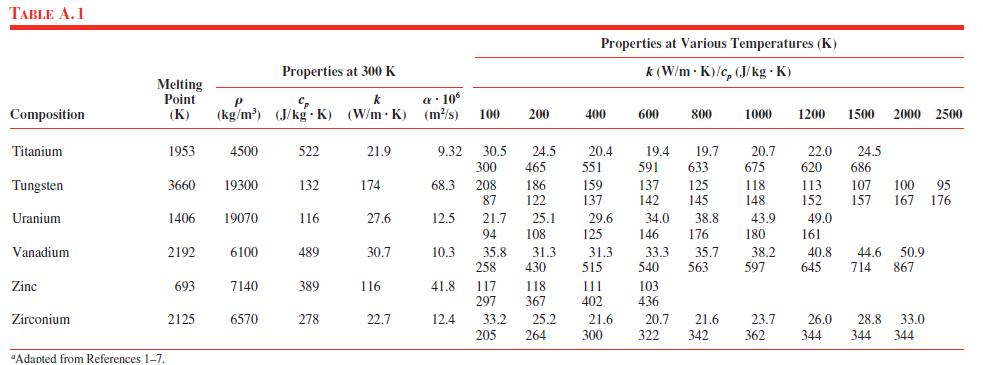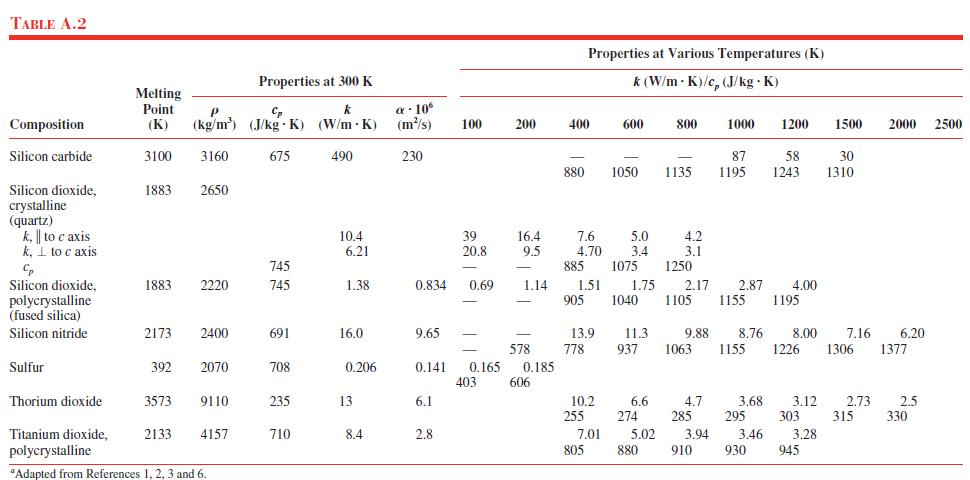A nanolaminated material is fabricated with an atomic layer deposition process, resulting in a series of stacked,
Question:
A nanolaminated material is fabricated with an atomic layer deposition process, resulting in a series of stacked, alternating layers of tungsten and aluminum oxide, each layer being δ = 0.5 nm thick. Each tungsten– aluminum oxide interface is associated with a thermal resistance of R"t,i = 3.85 x 10–9 m2 · K/W. The theoretical values of the thermal conductivities of the thin aluminum oxide and tungsten layers are kA = 1.65 W/m · K and kT = 6.10 W/m · K, respectively. The properties are evaluated at T = 300 K.
(a) Determine the effective thermal conductivity of the nanolaminated material. Compare the value of the effective thermal conductivity to the bulk thermal conductivities of aluminum oxide and tungsten, given in Tables A.1 and A.2.
(b) Determine the effective thermal conductivity of the nanolaminated material assuming that the thermal conductivities of the tungsten and aluminum oxide layers are equal to their bulk values.


Step by Step Answer:

Fundamentals Of Heat And Mass Transfer
ISBN: 9780470501979
7th Edition
Authors: Theodore L. Bergman, Adrienne S. Lavine, Frank P. Incropera, David P. DeWitt





